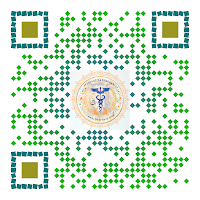Acute Cholangitis
Pseudo- Conditions in Medicine
Acute Pulmonary Embolism
Thyroid storm
- Therapy to control increased adrenergic tone: Beta-blocker
- Therapy to reduce thyroid hormone synthesis: Thionamide
- Therapy to reduce the release of thyroid hormone: Iodine solution
- Therapy to block peripheral conversion of T4 to T3: Iodinated radiocontrast agent, glucocorticoid, PTU, propranolol
- Therapy to reduce enterohepatic recycling of thyroid hormone: Bile acid sequestrant
Urinalysis & Urine Sodium
- [(U Na x P Cr) / (P Na x U Cr)] x 100
- U = Urine, P = Plasma, Cr = Creatinine, Na = Sodium.
- Re-absorption and filtration accounted (Both).
- Should not be used with normal renal function.
- FE Na < 1%
- Urine sodium < 20 mEq/L.
- FE Na > 2%
- Urine sodium > 40 mEq/L.
Capnography
 CAPNOGRAPHY V/S PULSE OXIMETRYCAPNOGRAPHY
CAPNOGRAPHY V/S PULSE OXIMETRYCAPNOGRAPHY - Provides a measure of ventilation – or concentration of CO2 exhaled air
- (aka end tidal CO2 or etCO2).
- Not effected by supplemental oxygen.
- Reflects breath-to-breath ventilation.
- Appear not normal if the patient has stopped breathing.
- Apnea or hypoventilation is detected immediately by capnography
- Measures oxygenation or arterial blood oxygen saturation & pulse rate.
- Detects oxygen deficiency (hypoxia).
- May appear normal even if the patient has stopped breathing.
- Takes time to detect Apnea or hypoventilation.
Hypoglycemia
Kidney disease: insulin not cleared out of circulation well.
Medications for Diabetic.
More frequently:
Meglitinides,
Sulfonylureas,
Insulin
Very infrequently:
Metformin,
GLP-receptor agonists,
SGLT-2, and
DPP-4 inhibitor
Liver Abscess
- Pyogenic abscess, accounts for 80% of abscess.
- Amebic abscess due to Entamoeba histolytica, accounts for 10%.
- Fungal abscess, accounts for < 10%.
- 50% of solitary liver abscesses occur in the right Liver lobe.
- Right hepatic lobe (~75%), less commonly left (20%) or caudate (5%) lobes.
- Pyogenic abscesses are usually polymicrobial.
- 50% of the bacterial cases develop by cholangitis.
- Pyogenic Abscess- initial manifestation of an occult intra‐abdominal malignancy (up to 15%).
- Positive blood cultures in up to 50%.
- Most common organisms: E. coli, Klebsiella, Streptococcus, Staphylococcus, & anaerobes.
- K pneumoniae thought to be associated with colorectal cancer.
- Fever in 90% & abdominal pain in about 50-75%.
- In-hospital mortality estimated at 2.5% -19%
Drainage of the abscess & antibiotic treatment are the cornerstones of treatment.
- Antibiotic Therapy:
Oral antibiotics are given after intravenous antibiotics are first administered.
- Percutaneous Drainage:
Continuous fever despite 48-72 hours of ABX therapy
Indications that the abscess may rupture
U/S or CT-guided aspiration & drainage- first-line treatment.
- Surgery:
When there are complications like rupture or numerous abscesses.
Open surgery or laparoscopic surgery.
Electrolyte Replacement
Significant electrolyte depletion can result in serious complications. These guidelines are meant to assist with empiric dosing of electrolytes for inpatients. Doses may need to be adjusted based on patient-specific factors, including creatine & cardiac status; & responses to initial doses.
- Goal serum potassium concentration 4.0 – 5.0 mEq/L
- Goal serum ionized calcium concentration 1.12 – 1.3 mmol/L
- Goal serum magnesium concentration 2.0 – 2.4 mg/dL
- Goal serum phosphorus concentration 2.7 – 4.6 mg/dL
IV electrolyte replacement can produce life-threatening complications, serious arrhythmias & phlebitis; therefore, supplementation must be carefully monitored. There are multiple underlying factors for electrolyte disorders in adult inpatients, including alterations in absorption, distribution, hormonal, and/or homeostatic mechanisms that can all cause disturbances. Treating the underlying cause and prescribing adequate therapy is essential for repletion. In addition, the intracellular vs. extracellular electrolyte concentrations must be considered. Due to distribution variances, labs may not directly correlate with true electrolyte levels. Therefore, continuous monitoring is essential to properly replete patients.
Fluid Analysis
Myasthenia gravis
- Ocular – the nerve endings in the cranial region are affected, and the eyelids fall asymmetrically. The patient complains of double vision and deterioration in visual acuity. Gradually focusing on one subject becomes difficult.
- Bulbar – the lesion extends to the masticatory muscles and tissues of the larynx. The patient’s voice changes, speech becomes quieter and nasal. Some consonants are very difficult to pronounce, and stuttering develops. Due to the penetration of fluid into the respiratory tract, the risk of pneumonia increases.
- Lambert-Eaton – the muscles of the arms, legs, and neck do not receive nerve impulses. It is difficult for the patient to coordinate these areas of the body. This form is diagnosed in the elderly and is characterized by rapid progression.
- Generalized – the muscles of the eyes are immediately affected, then the process spreads to the larynx, arms, legs, and hips. The main danger of this form is that the respiratory muscles are affected over time.
Drug-induced thrombocytopenia
Immune-mediated: Some drugs can trigger an immune response in the body, leading to the production of antibodies that attack and destroy platelets. This immune-mediated destruction of platelets is one of the common mechanisms in drug-induced thrombocytopenia. Examples of drugs associated with immune-mediated DITP include certain antibiotics (such as penicillin and sulfonamides), anti-inflammatory drugs (such as nonsteroidal anti-inflammatory drugs, or NSAIDs), and anticonvulsants.
Non-immune-mediated: Other drugs can cause thrombocytopenia through non-immune mechanisms, such as direct toxicity to the bone marrow where platelets are produced. Chemotherapy drugs, for example, can suppress bone marrow function and lead to a decrease in platelet production.

.%20Hypertriglyceridemia,%20Hyperlipidemia,%20Lipoprotein%20x%20accumulation%20(e.g.,%20Primary%20biliary%20cirrhosis)%20Familial%20h.jpg)
%20group%20(table%201)%20%5B7%5D.%20They%20include%20the%20following%20%E2%97%8FDyspnea%20at%20r.jpg)













